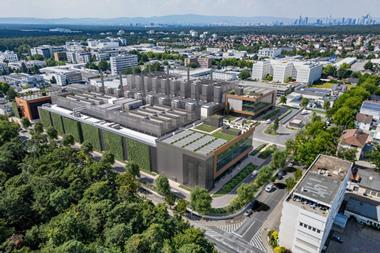ATP is expanding its management team to help deal with an increasing workload brought on by its growing portfolio and deals structure.
The property investment arm of Denmark’s biggest pension fund has appointed Martin Vang Hansen in the newly-created role of CFO at ATP Real Estate.
Vang Hansen, who begins next month, will become the seventh member of ATP Real Estate’s management board.
He is currently chief executive of the Færch Foundation (Færchfonden), a foundation set up by members of Denmark’s wealthy Færch family.
Michael Nielsen, chief executive of ATP Real Estate, told IPE Real Assets: “There are a number of reasons for us having taken the decision to create the new CFO role.
“The main one is that we have seen a rather big expansion in our business and we expect that to continue.”
ATP, which has DKK769bn (€103.2bn) of pensioner assets and runs the Danish labour market supplementary pension, has a growing portfolio property assets both in Denmark and abroad, Nielsen said.
“We are seeing more and more complicated deals that we are involved in,” he said.
“Another reason is that we have increased the size of our organisation at ATP Real Estate, and we now have approximately 85 members of staff doing asset and property management,” Nielsen said.
On top of this organisational growth, he said the amount of regulation for pension funds has been increasing, and it has consequently become even more important for reporting to be done very thoroughly.
“So that’s another reason for us having a strong CFO,” he said.
ATP’s real estate investment became particularly active in 2010, just after the financial crisis, and last year the pension fund added almost DKK10bn of assets to its portfolio, Nielsen said.
“So it is really growing now,” he said.
“Furthermore, within our portfolio, we have assets that we are actively managing, for example, office buildings that we are repositioning, and it all takes a lot of resources,” he said.
At the end of 2017, ATP portfolio had a value of DKK43.8bn.
Earlier in ATP’s real estate investment history, the fund only invested indirectly, via property funds outside Denmark, which Nielsen said was definitely simpler than direct investments.
Two examples of major conversion projects ATP Real Estate is currently working on are the planned change of use of a 30,000sqm office building on the edge of Copenhagen’s Christianshavn district, known as the “Desert Fort” (Ørkenfortet) and leased to Nordea, which is to become a Hilton hotel, and another building in the Danish capital which is being upgraded to become a Scandic hotel.
Such conversions are managed by ATP Real Estate’s own teams in conjunction with main contractors and architects and others, Nielsen said.
“We always work hard to do active management in our portfolio, in order to generate the best returns on our assets,” he said.
This active management strategy for real estate is one which ATP is continuing with, he said.
“Our preferred way of investing is still to do it directly within Denmark, because we have an in-depth knowledge of our domestic market, or to team up in joint ventures with investment partners outside Denmark who are experts within their field,” he said.














